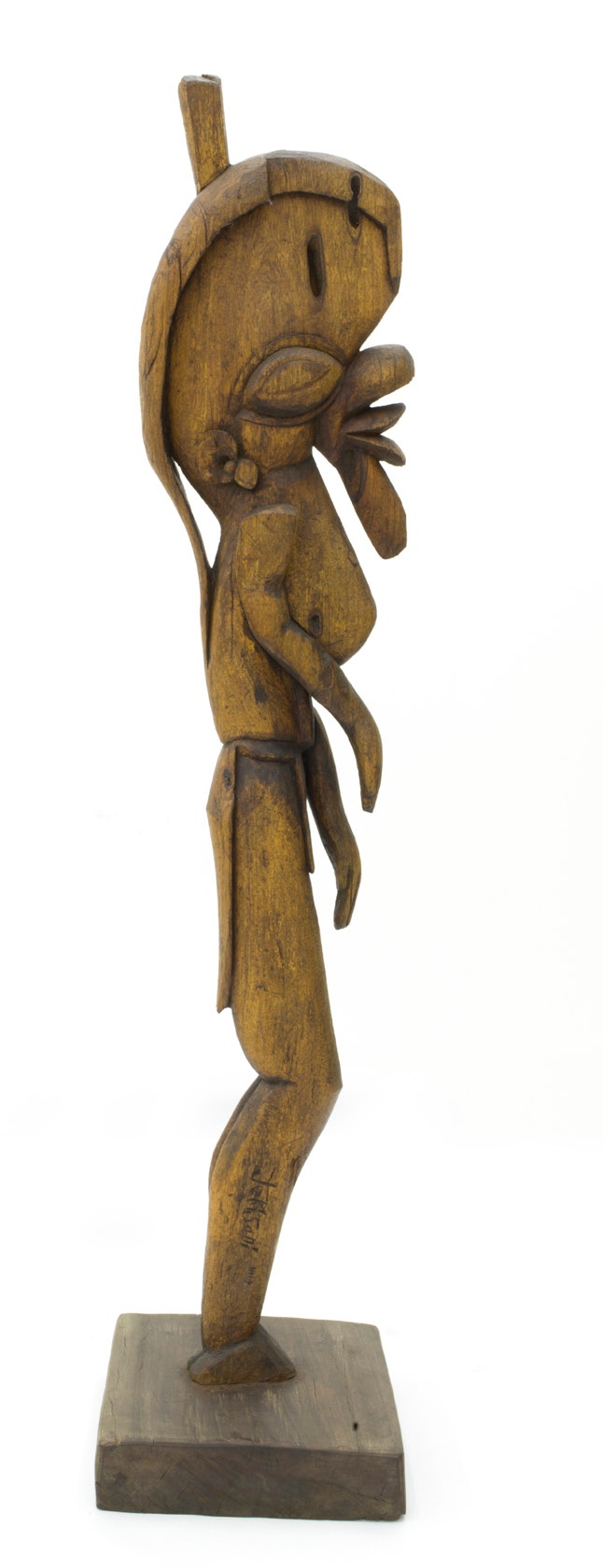Jackson Hlungwani

Though a self-proclaimed healer, Hlungwani warned against traditional African medicine men who worked without the influence of Christianity. “Magical healing practices are used by Satan,” he counselled his followers, “but they can be brought back to God. In the book of Genesis, we read of how the Lord created human beings and decided to give them wisdom… Yes, for me, who is a Christian, the Bible is my bag of divining bones. While for the traditional healers, the bones are those they throw and consult.” Hlungwani’s Medicine Man, it follows, is a figure of no uncertain evil. In form, the work is characteristic of his distinct, stylised figuration and sculpted lyricism. Made from salvaged wood, the unholy medicine man bends and bows to accommodate the material’s natural shape.
b.1923, Kanana; d.2010, Mbhokota
The life of Jackson Hlungwani’s reads as a story of myth. A charismatic leader, he was a deeply religious man, “as much a visionary, a prophet and a healer as he was maker of objects,” in the words of critic Ivor Powell. His faith was a synthesis of Tsonga-Shangaan spiritualism and apocalyptic Christianity, one of ancestors and angels, animal totems and trinity. Hlungwani spoke often of a near-death experience in which Christ appeared to him and asked that he found a church to spread the gospel in sermon and sculpture. His subsequent carvings were a part of worship, didactic and instructive images made for his church, and a tangible expression of his faith. Indeed, Hlungwani believed his work to be redemptive in its power to communicate his message of salvation.